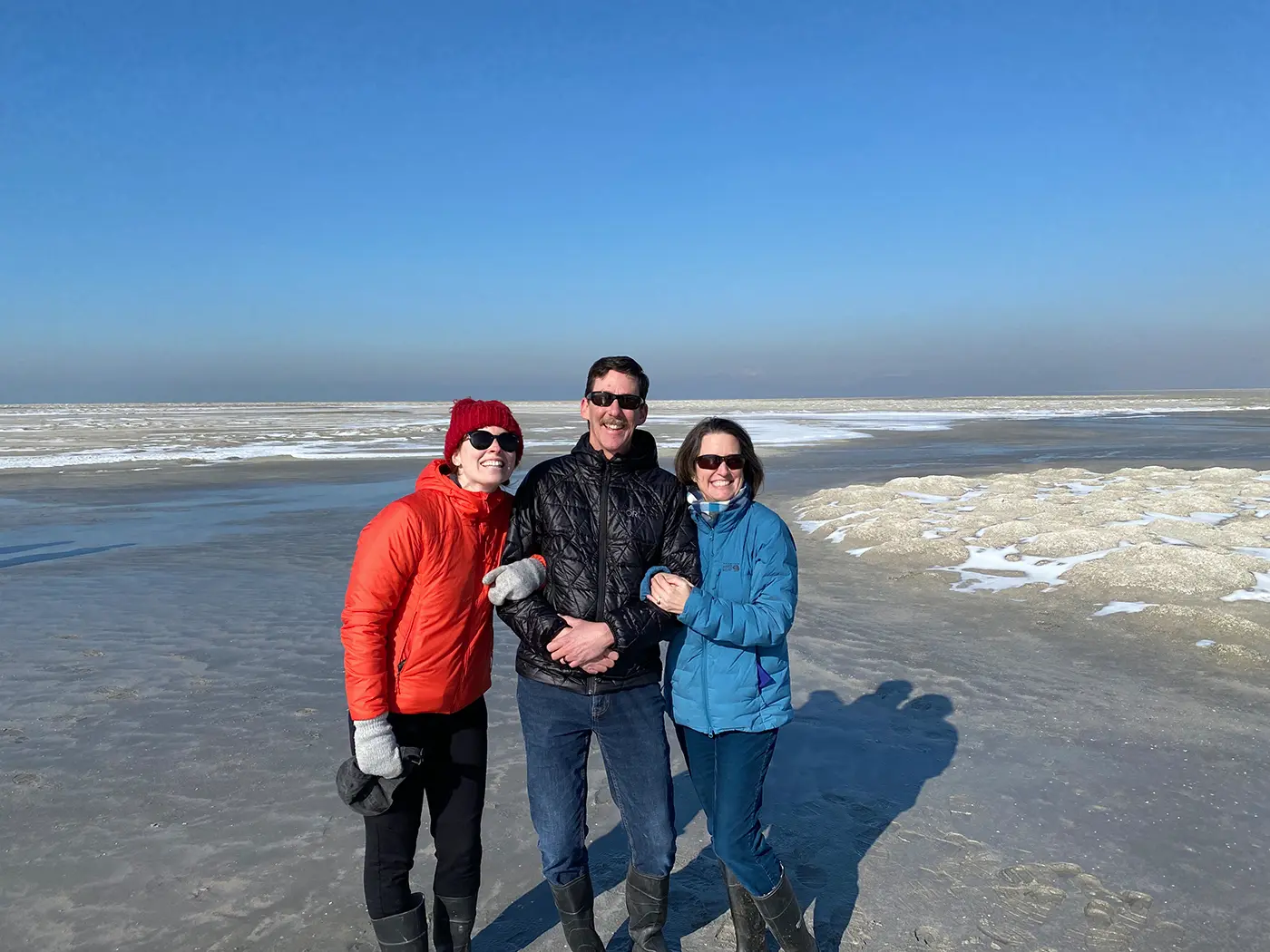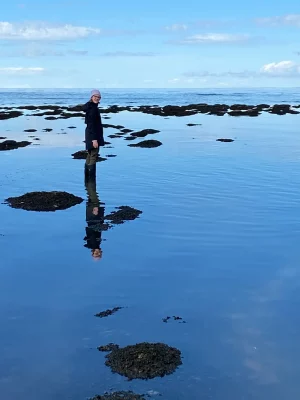
The Great Salt Lake Institute’s Scientific Perseverance
Activism, Outreach and Education
Established in 2008, the Great Salt Lake Institute (GSLI) at Westminster University (formerly Westminster College) produces gobs of both professional and student-led research on innumerable aspects of our local slice of salt-water. GSLI has become the favored fount of knowledge regarding all things Great Salt Lake as it shrinks and collateral impending crises become increasingly publicized, yet the staff is directed by just three mighty minds—Director Dr. Bonnie Baxter, Assistant Director Dr. David Parrott and Coordinator Carly Biedul—who, as we talk, point and laugh at their matching forehead bug bites from another lengthy day spent on the waterfront.

Consisting of birds, brine and flies (oh my!), the Great Salt Lake and its surrounding wetlands make up a “vibrant, robust pot of biology rich with biomass,” according to Dr. Baxter. Heralded as the second-largest breeding colony of white pelicans in the world and teeming with “a massive population of microorganisms,” the lake offers much more than meets the untrained eye. It’s one of the most important food sites for birds in the Western hemisphere, a flagship for Utah’s economy and ski industry and a place rich with Indigenous history. “It’s so diverse that everyone gets something from it,” says Dr. Parrott. “There’s art, there’s science and there’s history out there. There are Indigenous people who have lived there for thousands of years before we got here—there’s so many different aspects on which we can do research.”

Their admiration for the lake explains both GSLI’s conventional and unconventional methods of research. Bringing undergraduate students along to study water and soil microorganisms, plant life, insects and birds all makes sense for a natural sciences institute. Yet, GSLI also offers opportunities to dancers, writers, poets, public health students, business students—you name it. At GSLI, students have the agency and assistance to explore the lake according to their own personal passions. With research opportunities offered to all students regardless of their chosen field of study, GSLI impacts a diverse group.
“It’s so diverse that everyone gets something from it.”
Because of the interdisciplinary work prevalent in the institute—in spite of the sometimes grim aspects evidenced by their steady body of findings—these three scientists recognize the importance of humanity, beauty and hope in the advancement of Great Salt Lake knowledge. “If I didn’t have hope, I wouldn’t be able to do this job,” Biedul says. It’s a concept that Dr. Baxter reiterates: “Scientists are trained to not have feelings about their work, but I started to transcend that. I think that’s why we need the humanities, the arts and disciplines beyond the sciences to help us feel the essence of what’s confronting us as human beings.”
Regardless of ecological necessity, Dr. Parrott believes there is still an inherent reason to save the lake. “I think that everyone should go out there because it’s beautiful. It’s a little smelly, but show me a lake that isn’t. There’s a reason right there why we should keep the lake: Look at what we have in our backyard. The fact that it has this amazing ecosystem and that it provides jobs for people is cool, and that keeping water in it is going to save us all from dying of arsenic poisoning—these are all good reasons to save the lake.”
“There’s art, there’s science and there’s history out there. There are Indigenous people who have lived there for thousands of years before we got here—there’s so many different aspects on which we can do research.”
Beauty isn’t only found on the surface. The GSLI dives deeper, consistently finding that beauty is embedded in the very nature of the water and the complexity of its ecosystem’s inner workings. The GSLI has taught us, and will continue to teach us, that the Great Salt Lake manages sincerely to be the best of both worlds: It is lovely and it is the salt of the Earth.
Learn more about the Great Salt Lake Institute via their website, found via search on westminsteru.edu, on Instagram @gslinstitute or Facebook at Great Salt Lake Institute at Westminster College.
Read more about local public outreach in Salt Lake City:
Unsheltered Utah: Surviving The Moratorium
Public Art Piece In Search of Blue Sky Find Common Ground In Air Quality Fight
